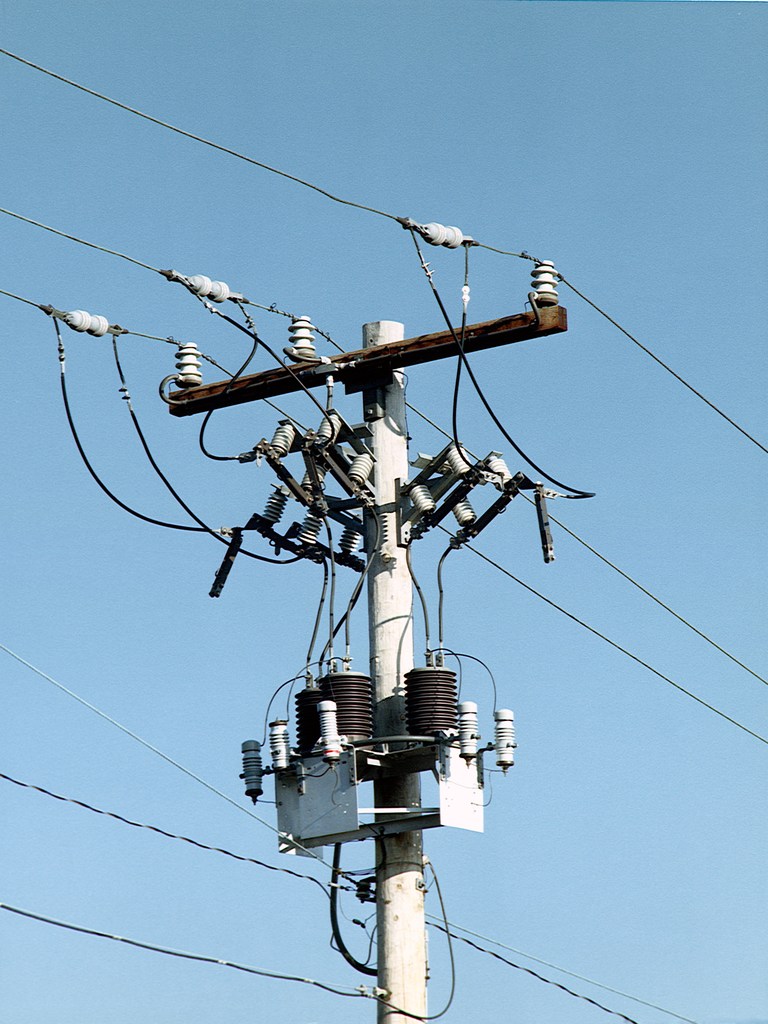Study will help inform industry and prepare for growing electricity demand
December 5, 2024David Howard
David Howard is an Engineer within the Office of Electricity. Mr. Howard has over 25 years of industry and federal government experience in the area of power systems engineering, cybersecurity, R&D, and modeling and analytics. He currently manages the three Phase 1 projects that are addressing advanced protective relaying technologies and tools.

by David Howard
Have you ever noticed electric poles with gray, bucket-like devices attached at the top? These “buckets” are transformers that lower the voltage supplied by power lines to help residents and businesses to safely use electricity. Because power lines have very high voltage, directly connecting a home to a power line without a transformer would be very dangerous—don’t try it! Transformers, then, are an essential component that allows utilities to distribute power to individual homes or complexes.
With the rise of electric vehicles and data centers, it is no surprise that distribution transformers are in high demand. In fact, there is a national shortage of transformers because of this demand and other supply chain issues. You might ask, “How many transformers will we need to meet this demand and how much capacity will they need to have?”
We can now answer these questions.
The National Renewable Energy Laboratory (NREL), in collaboration with the Office of Electricity (OE), has released a report that describes the number and capacity of transformers in the United States, their current age profile, and how demand might increase in the coming years. The report, titled Distribution Transformer Demand: Understanding Demand Segmentation, Drivers, and Management Through 2050, provides a national estimate that can help manufacturers and utilities assess how many transformers will be needed in the United States and how that demand can be managed.
The study found that the demand for transformers has increased for two major reasons: new customers and overall aging of in-service transformers. New customers increasing demand is understandable. Regarding the age of transformers, the report states, “NREL estimates [there are] 60–80 million distribution transformers, with between 2.5 and 3.5 TVA (that is over 2.5 to 3.5 billion kilowatts) of capacity, and that ~55% of in-service units are more than 33 years old and approaching end of life.” More than half of the transformers in this country are becoming too old to reliably function and can fail at any time. We not only need to build new transformers, but we also need to replace the ones that are aging out. As the report puts it, “We expect both aging assets and increases in loading to accelerate asset failure rates, particularly after 2030.”
The report also finds that we are currently not ready to meet the distribution transformer demand. “Modeling suggests annual capacity requirements will far outpace increases in the number of units required each year.” Utilities will need to upsize existing transformers as well as provide more transformers. There is a growing trend to install distribution transformers on the ground (pad-mount) as extreme weather events make pole-mounted transformers more susceptible to damage. This will further increase the demand for pad- mounted distribution transformers. Customers can help prolong the life of the transformers that provide power to them by charging their electric vehicles during off-peak times between the late evening and early morning.
NREL’s work with OE is ongoing, and NREL will refine estimates from new industry data and will analyze different scenarios for demand. The published report provides data necessary to understand the challenges that face us and, more importantly, to make plans for how we can address them.
So the next time you see a “bucket” on a utility pole, know how important and valuable it is.

